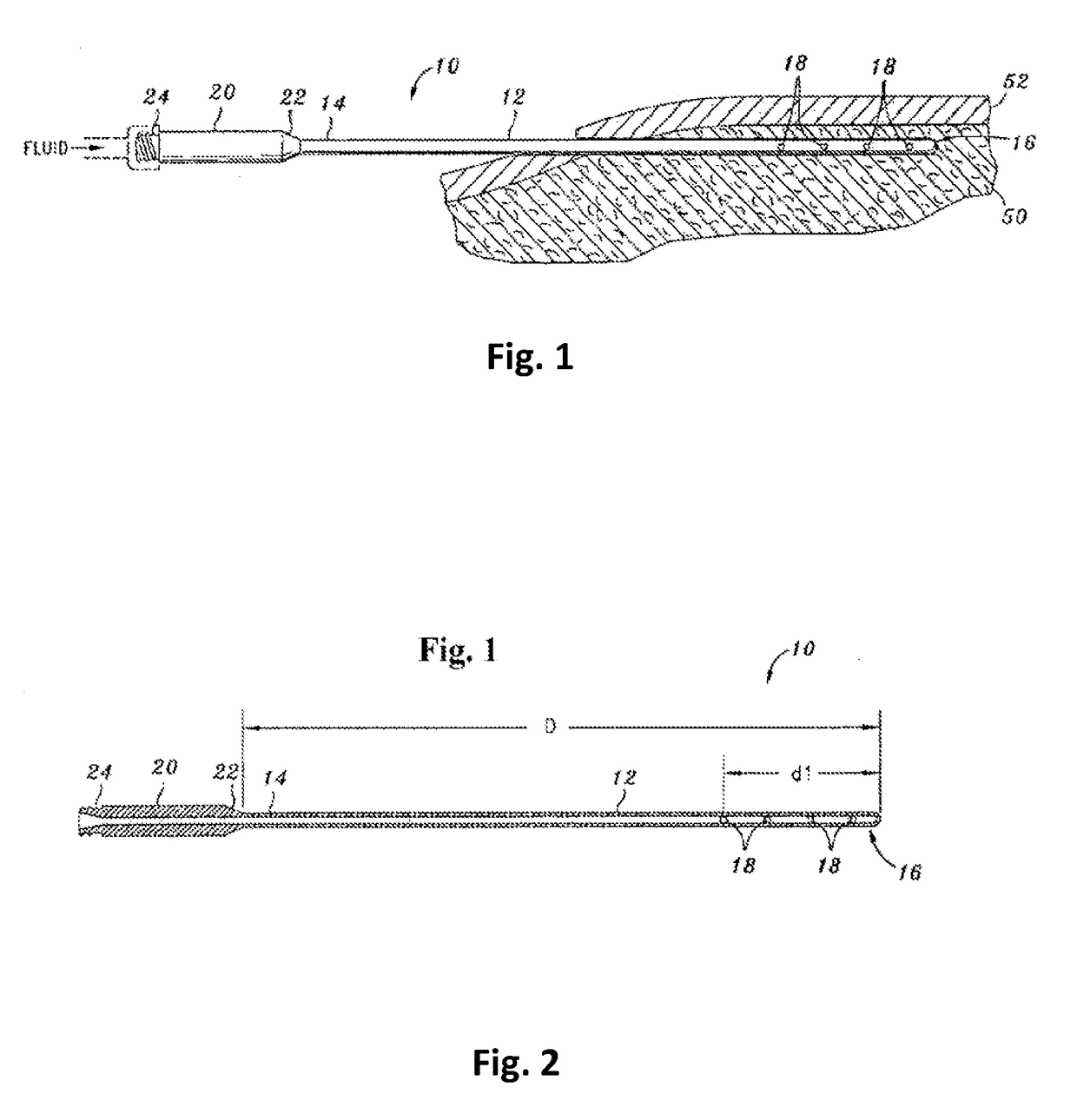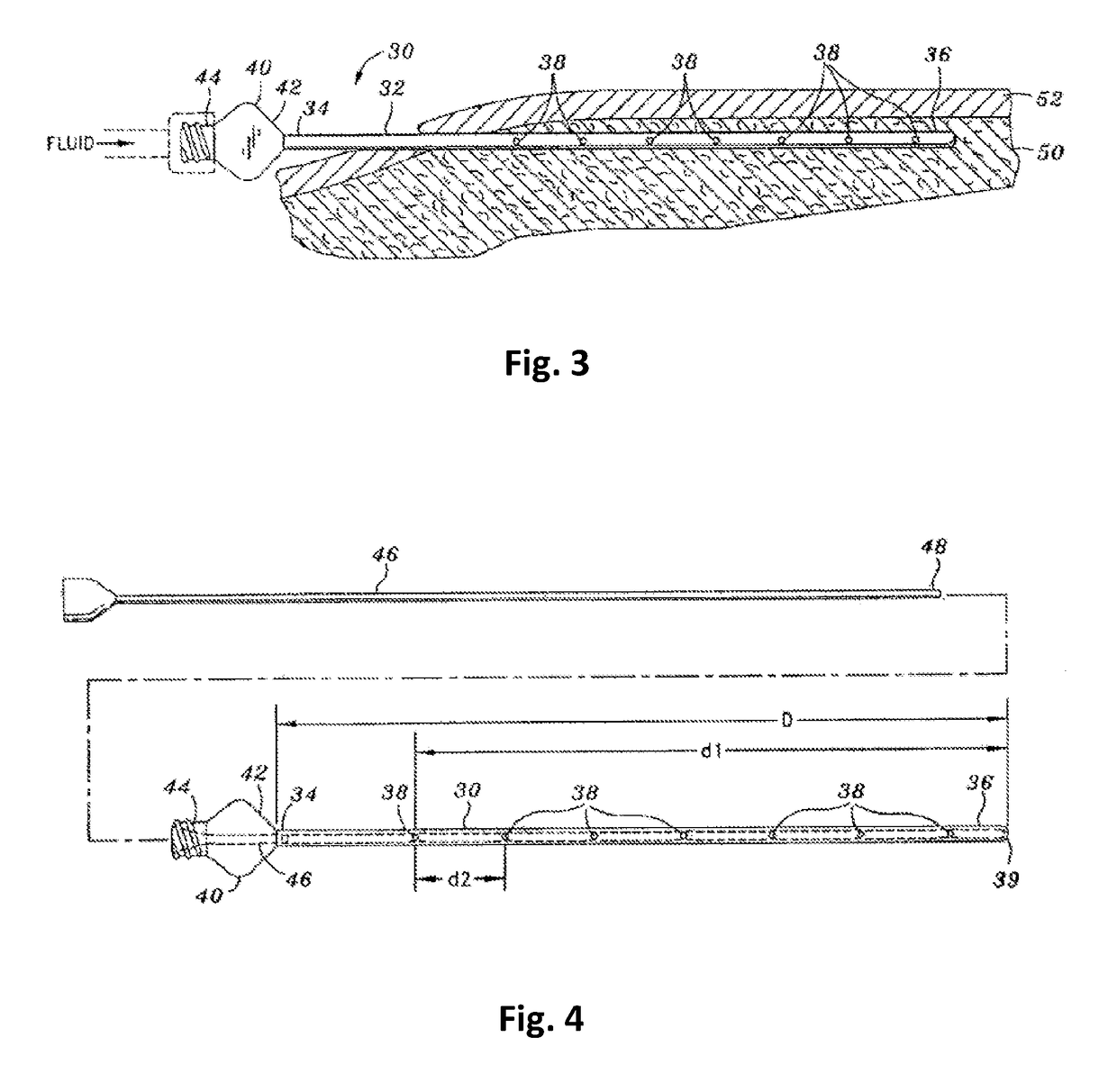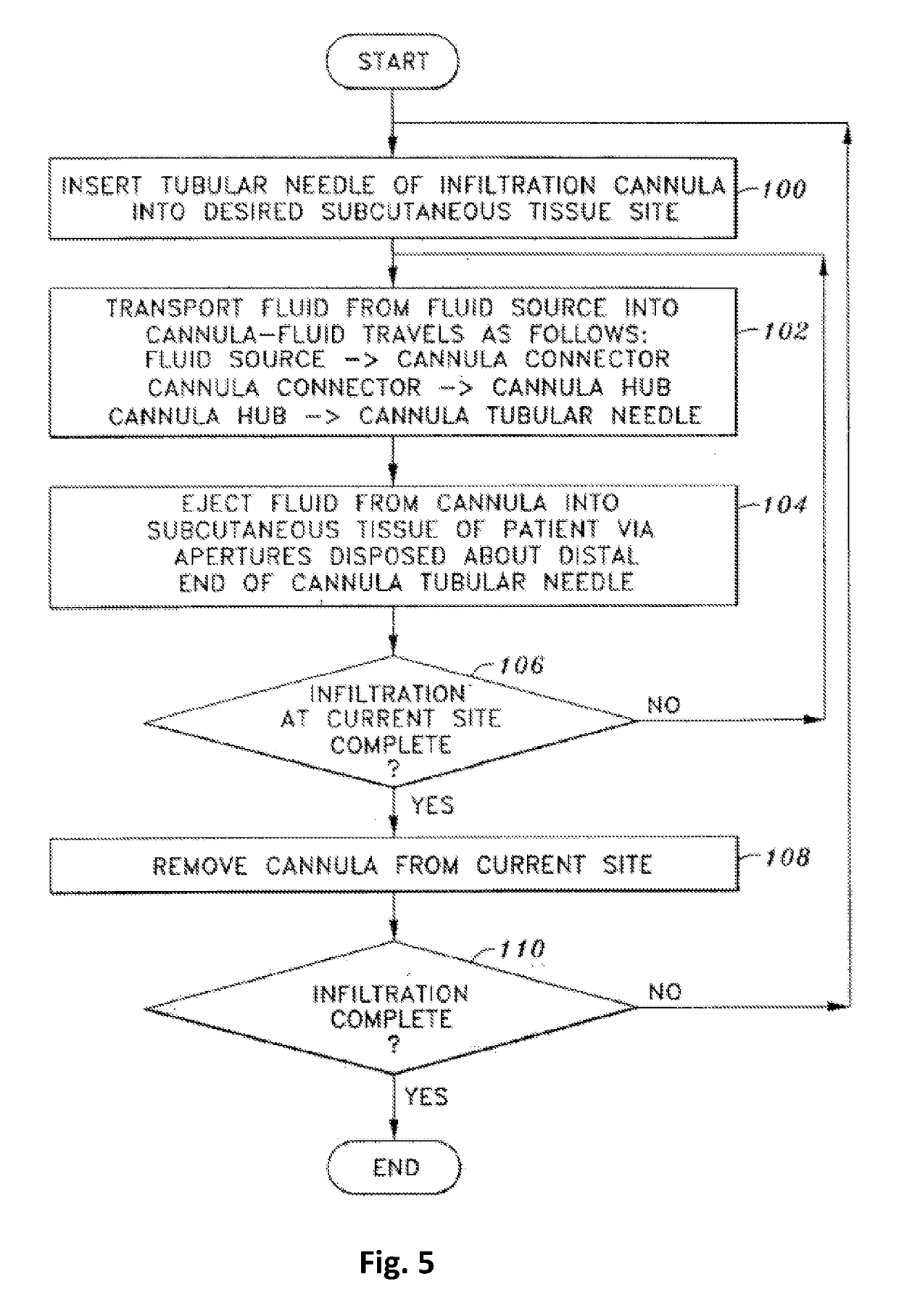Tumescent infiltration drug delivery of high subcutaneous drug concentrations with prolonged local and systemic effects and minimal local or systemic toxicity
a drug and drug technology, applied in the direction of heterocyclic compound active ingredients, organic active ingredients, inorganic non-active ingredients, etc., can solve the problems of excessive tissue distention, discomfort and pain of patients, and excessive tissue distention, so as to reduce local and systemic blood viscosity, local, and systemic oxygenation of tissues in the subject's body
- Summary
- Abstract
- Description
- Claims
- Application Information
AI Technical Summary
Benefits of technology
Problems solved by technology
Method used
Image
Examples
example 1
Clinical Evaluation of Tumescent Antibiotic Delivery
[0400]With IRB-approval, 4 subjects received Cefazolin IV Antibiotic Delivery (WAD) or Tumescent Antibiotic Delivery (TAD) on repeated occasions. One patient received Metronidazole and Cefazolin.
[0401]TAD was achieved using blunt-tipped Monty infiltration cannula and peristaltic tumescent infiltration pump. Treated areas included: abdomen (Patient 1 & Patient 4); female breasts (Patient 2); and hips-outer thighs (Patient 3). Patient 4 received Cefazolin and Metronidazole.
[0402]After TAD or IVAD treatment, blood was sampled at 1 to 2 hour intervals for a period of ≧12 hours. After TAD treatment, samples of subcutaneous fat / tumescent fluid were aspirated by hand-held syringe-liposuction at 1 to 2 hrs for a period of ≧8 hrs. Samples were centrifuged. Serum and subcutaneous interstitial tissue fluid were assayed for Cefazolin or Metronidazole by HPLC. Results are shown in FIG. 8.
[0403]Patient 1 was studied on 3 separate occasions with ...
example 2
Evaluation of Antimicrobial Activity of Lidocaine and Cefazolin by Determination of Minimum Inhibitory Concentration and Minimum Bactericidal Concentration
[0405]The bactericidal properties of three antimicrobial compounds (Cefazolin, Lidocaine and Lidocaine+Cefazolin) were evaluated by measuring the Minimum Inhibitory Concentration (MIC) and Minimum Bactericidal Concentration for Staphyloccus aureus (MRSA) ATCC 33592.
[0406]A standardized suspension of Staphyloccus aureus (MRSA) ATCC 33592 was prepared by culturing on tryptic soy agar for 3-5 days at 35° C. The agar slant was washed with sterile phosphate buffer solution and the organism concentration was adjusted. Innoculum levels of Staphyloccus aureus (MRSA) ATCC 33592 were between 4.4×105 to 4.7×105 CFU / ml.
[0407]In order to determine Minimum Inhibitory Concentrations (MIC) of Lidocaine, Cefazolin, and Lidocaine+Cefazolin standardized suspensions of Staphyloccus aureus (MRSA) ATCC 33592 were added into separate 10 ml aliquots of v...
example 3
Tumescent Antibiotic Delivery in Treatment of Infection
[0410]A patient presenting with a localized infection characterized by a central abscess and inflammation is treated by tumescent antibiotic delivery to the affected area. A solution of 250 mg of cefazolin (150 ml from a solution consisting of 500 mg of cefazolin), 300 mg lidocaine. 0.3 mg epinephrine, 3 meq sodium bicarbonate is dissolved in saline to a total volume of 280 ml. The solution is then infiltrated in the area of inflammation. The patient is examined approximately 12-24 hours after infiltration for visible evidence of inflammation and / or redness.
PUM
| Property | Measurement | Unit |
|---|---|---|
| concentration | aaaaa | aaaaa |
| concentration | aaaaa | aaaaa |
| concentration | aaaaa | aaaaa |
Abstract
Description
Claims
Application Information
 Login to View More
Login to View More - R&D
- Intellectual Property
- Life Sciences
- Materials
- Tech Scout
- Unparalleled Data Quality
- Higher Quality Content
- 60% Fewer Hallucinations
Browse by: Latest US Patents, China's latest patents, Technical Efficacy Thesaurus, Application Domain, Technology Topic, Popular Technical Reports.
© 2025 PatSnap. All rights reserved.Legal|Privacy policy|Modern Slavery Act Transparency Statement|Sitemap|About US| Contact US: help@patsnap.com



